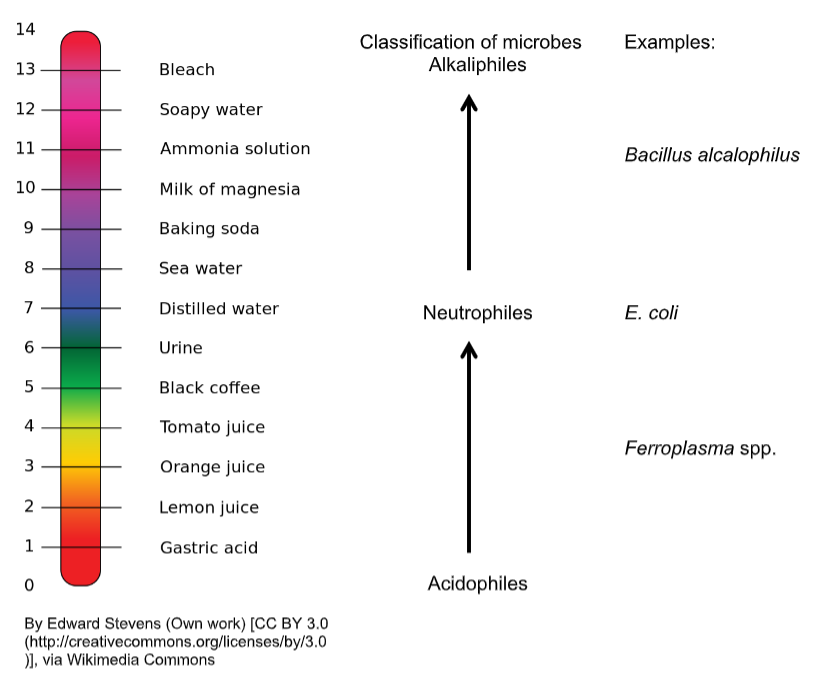12.2: Introduction
- Page ID
- 40226
The pH of an environment can affect the growth and survival of the microbes in that environment. pH is a measure of the hydrogen ion concentration or activity, in a solution, expressed as:
\[-\log_{10}[H+] \nonumber \]
Every organism has an optimal pH range at which it will grow. If the pH is too high or too low it can affect things like the solubility of molecules, denaturation of proteins/enzymes, membrane transport, proton-motive force/membrane potential, etc. These changes can be devastating to a bacterial population. We have exploited this in the production of foods, for example, pickling is a common method of food preservation and compounds like citric acid are often added to food products to lower the pH and prevent spoilage or toxin formation.
Most bacteria are neutrophils while fungi prefer a more acidic environment from pH 4-6. Archaea are found in all ranges. Nonetheless, all microbes keep their internal environment near neutral and some have developed mechanisms to allow them to survive in the more extreme ranges.
In microbiology we also use a variety of biochemical tests based on pH changes in the media as diagnostic tests. Many bacteria produce acids that are released into the environment as metabolic products of fermentation. These acids can have a big effect on the pH of a closed system like a test tube or agar plate. You will utilize some of these biochemical tests in the future to help you identify bacteria and key characteristics of them.
The pH scale is a tool to measure the relative acidity of solutions, food, natural environments like lakes (water), and as stated, biochemical reactions. The scale is logarithmic reflecting the definition of pH and actually making the scale easy to use. pH 0, which is the most acidic level, has a hydrogen ion concentration of 100 moles/L; pH 14, the most alkaline, has a hydrogen ion concentration of 10-14 moles/L. Pure water is neutral and therefore has a pH of 7 (10-7 moles/L). Each pH level represents then a tenfold decrease or increase in hydrogen ion concentration. So, pH6 is ten times more acidic than pH 7, and ten times more alkaline than pH 5.
There are 3 main groups of microbes classified by the pH range they can survive in:
Acidophiles: pH 0-5.5
Neutrophiles: pH 5.5-8.0
Alkaliphiles: pH 8.0-11.5

Contributors and Attributions
Kelly C. Burke (College of the Canyons)


